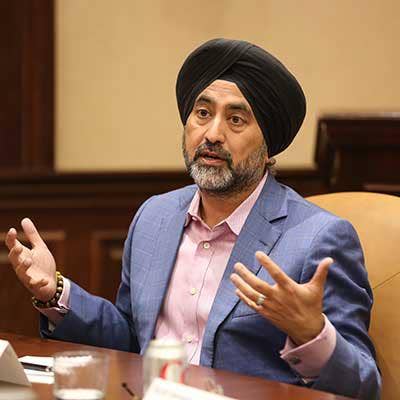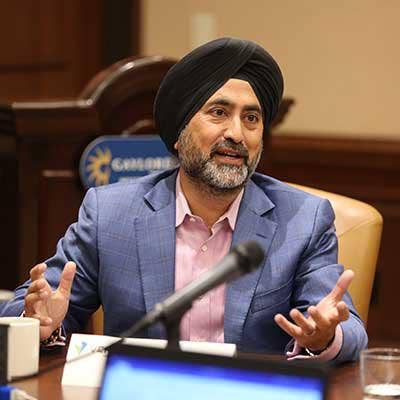SD-WAN Primer: 8 Ways Partners Are Driving Huge Competitive Advantages For Customers

SD-WAN For The Win
There's no denying that SD-WAN can save business customers money, but it can also enable new use cases that weren't possible before thanks to a more dynamic and flexible network across disparate locations. Customers aren't the only ones benefiting from this emerging – and increasingly popular – next-generation networking technology. SD-WAN is putting solution providers in the driver's seat with network management and letting partners stand out as trusted advisors.
At XChange 2017 in Orlando, a panel of SD-WAN startups and networking vendors shared a variety of SD-WAN case studies that their channel partners were driving during a roundtable hosted by The Channel Company. Here are excerpts from the conversation.

CloudGenix In Retail
CloudGenix, flanked by a channel partner, recently won a sale with "one of the largest clothing retailers on Earth" when the provider and partner began asking the customer about its business problems and what was standing in the way, rather than talking speeds and feeds, said Kumar Ramachandran, CEO of CloudGenix (pictured).
"We brought to the table discussions about what was happening in the retail industry, and omnichannel initiatives – things like virtual mirrors that, without using a dressing room, you could actually try on clothes. Things like analytics-based POS systems. Things like video where you can bring in an expert in a particular field to engage with a customer and allow for an upsell to happen. That conversation was back ended by the fact that CloudGenix is enabling all these services, all these capabilities that in the past would have been too expensive, too complex, and basically a business prohibitor. [Our technology] allow for a very simple implementation that took costs out, and enabled new capabilities that the business knew they wanted."

Versa Networks Versus Spotify
One Versa Networks customer is saving money – and its sanity – after a channel partner uncovered that corporate users listening to music throughout the day from a popular streaming application were choking the network, according to Kelly Ahuja, Versa Networks' CEO (pictured).
"Our channel partner was able to recognize that 50 percent of the traffic at a particular site was actually Spotify, and employees listening to music was congesting the corporate and VPN traffic. The [partner] went to the customer and said, 'Look, this is what's going on. Wouldn't you rather just do a split tunnel and break out the software into the Internet?' And they said, 'Of course.' That improved the performance of the application for all the other users at that site. And the channel partner became even more trustworthy and loyal for that end customer because they were able to provide them that insight and be able to make something happen very quickly and easily."

Solution Provider Going Big With Talari Networks
LightEdge, a Des Moines, Iowa-based solution provider that started off small, is now offering hosted services and recently added SD-WAN to help customers reach their services more reliably, according to John Dickey, president, CTO, and co-founder of San Jose, Calif.-based Talari Networks (pictured).
"LightEdge is being successful because they are providing the differentiated services, the higher quality services, as compared to just commoditized lower cost [connectivity]. They're trying to make money off of saving a few bucks. They're trying to make money by offering better services and being worth a premium price at a higher margin. So, it's the Apple sell, not the commodity off-the-shelf hardware sell."
"Some companies will straddle a little bit in the middle trying to figure out are they scale or are they basically the higher value services. But LightEdge has been very successful with this, and they're now getting a very strong reputation. They keep growing their business. They're installing PoPs as well in order to do this. So, they're expanding their business out beyond that region. They added the SD-WAN play, which made it better to get to the host, and which also meant they can go out of their region now because they're not [faced with] latency because of proximity. [SD-WAN] is basically opening up new business opportunities that are flowering for them that they didn't have otherwise."

Cisco Powering Mobile Healthcare Clinics
A solution provider and Cisco partner is helping a large hospital run mobile clinics for patients during the weekends. The clinics are spun up on Fridays and decommissioned on Sunday nights, and the hospital is paying for flexible networking on a consumption basis, according to Ramesh Prabagaran, senior director of product management for Cisco (pictured).
"We don't ask them to go pay for the device, [and] am not asking them to pay for the circuit that goes with it. Nothing is permanent because it's all mobile-based. The channel partner in this particular case, offered the customer a model where they said, 'Okay, let's look at how many of these things are you going to do in a single weekend and out for the next 20 weekends?' They came up with a subscription-based model that's based on usage. When was the last time in the history of networking that somebody offered networking based on usage other than AWS and Azure? Nobody offered it, but this channel partner was able to offer it."

Saving "Millions" On MPLS With Versa Networks
A large enterprise with 500 global sites is not only saving money on MPLS, but the company is able to deploy new use cases that it couldn't accomplish before thanks to a newly-implemented solution that includes SD-WAN from Versa Networks and a channel partner that did the heavy lifting, said Ahuja.
"For one customer, their current model if they just did business as usual and added the capacity that they needed to for all the use cases they talked about, the ROI was in the tens of millions of dollars. They looked at SD-WAN, and certainly it saved them money. They added internet instead and used a hybrid network. And the reason the solution provider was doing it? Because it was a managed service offer where they could actually attach a device and manage the whole service for the end customer, not just MPLS. They were able to do that for a lot less -- probably in the 11 to 12 million dollar range."

Sliver Peak Bringing New Auto Body Shops Online
Through the help of a channel partner, one auto body shop customer can make acquisitions without the growing pains associated with combining disparate networks thanks to SD-WAN, explained Damon Ennis, senior vice president of products for Silver Peak (pictured).
"We've got a customer called Service King, an auto body shop. Auto body shops shouldn't be interested in technology. They don't care. But their business model is … they go around, and they buy small mom and pop body shops and then bring [those shops] onto the Service King network. They'll give [that shop] the benefit of cheaper parts, essential HR system, payroll, and everything else. So, challenge number one is they go and buy [a] body shop that has internet access but doesn't have MPLS. In the old days, you'd have to go and call up [an] AT&T or Verizon to get them to plug in an MPLS circuit or go and ship a router out and get it all configured. It took months. But, every single auto body shop out there has Internet. So, they can simply ship Silver Peak devices to anyone's body shop. It's on the network. It's up and running. They're getting all their business advantages."
"So what's their ROI on that? It's huge ... Instead of them taking six months to bring their next acquisition online they can do it in a day."

Restoration Hardware Taps CloudGenix
CloudGenix and a partner worked together to solve the logical retail flow issues that Restoration Hardware, a high-end furniture chain had been struggling with at its brick and mortar store locations.
"If someone comes in, likes a great table -- the grain, the color, etc. -- but maybe not the shape, what you want to do is be able to install high-definition flat screens right next to that table, [so customers] can look at other inventory and purchase it right there," said Ramachandran. "Because when a customer leaves the store, it's a lost sale."
"The technologies needed to enable this? One, much more capacity. Two, controls on the capacity. Three, security. We came in and eliminated [hardware] from their stores, Cisco firewalls, routers, and analytics tools. They had cost savings on the WAN, and replaced [the Cisco hardware] with a subscription service from CloudGenix. The channel partner we have in this case did not get all the revenues from Cisco because of the way they splintered out the various business units. But here they got the entire upsell. That was the point of calling on best-of-breed. The partner took a much larger pie while saving costs for the customer.

Talari Networks At Sea
Through its channel partners, Talari Networks sees success in a niche area – boats and ships. These customers rely on a combination of expensive satellite links while out at sea, and wireless options, such as LTE, for connectivity closer to a dock or port. Partners that are doing managed services for these customers can not only save these customers money, but are also enabling ways for these companies to turn a profit, Talari's Dickey said.
"Having the ability to use alternative sources of bandwidth but do it on the fly without anybody getting affected, [is crucial]. What's interesting about this too is we also have cruise ship versions of this. Besides the idea that they can use the cheaper bandwidth, they also now charge up the special bandwidth reliability on our cruise ship for the people who really want it, because a lot of business people will need it. So, they actually can charge a premium at the same time as they save money on the downside."
"[This also enables] on-demand bandwidth. Let's say they have some peak times. Let's say everyone in the morning needs to access emails more often than anything else. They'll turn on all the networks, including the satellite. [Doing] that type of stuff with this technology is really cool. It brings to a partner technology that they've never had before, and at the same time end users get a better service."